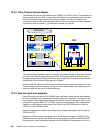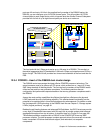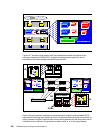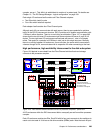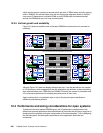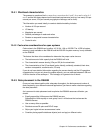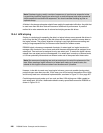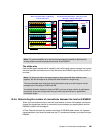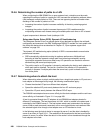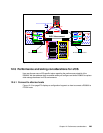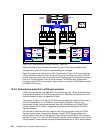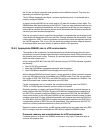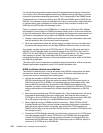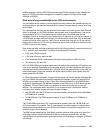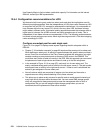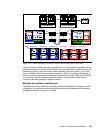268 DS8000 Series: Concepts and Architecture
12.4.6 Determining the number of paths to a LUN
When configuring the IBM DS8000 for an open systems host, a decision must be made
regarding the number of paths to a particular LUN, because the multipathing software allows
(and manages) multiple paths to a LUN. There are two opposing factors to consider when
deciding on the number of paths to a LUN:
Increasing the number of paths increases availability of the data, protecting against
outages.
Increasing the number of paths increases the amount of CPU used because the
multipathing software must choose among all available paths each time an I/O is issued.
A good compromise is between 2 and 4 paths per LUN.
Subsystem Device Driver (SDD): Dynamic I/O load-balancing
The Subsystem Device Driver is a pseudo device driver designed to support the multipath
configuration environments in the IBM TotalStorage DS8000. It resides in a host system with
the native disk device driver as described in Chapter 15, “Open systems support and
software” on page 319.
The dynamic I/O load-balancing option (default) of SDD is recommended to ensure better
performance because:
SDD automatically adjusts data routing for optimum performance. Multipath load
balancing of data flow prevents a single path from becoming overloaded, causing
input/output congestion that occurs when many I/O operations are directed to common
devices along the same input/output path.
The path to use for an I/O operation is chosen by estimating the load on each adapter to
which each path is attached. The load is a function of the number of I/O operations
currently in process. If multiple paths have the same load, a path is chosen at random
from those paths.
12.4.7 Determining where to attach the host
When determining where to attach multiple paths from a single host system to I/O ports on a
host adapter to the storage facility image, the following considerations apply:
Choose the attached I/O ports on different host adapters.
Spread the attached I/O ports evenly between the four I/O enclosure groups.
Spread the I/O ports evenly between the different RIO-G loops.
The DS8000 host adapters have no server affinity, but the device adapters and the rank have
server affinity, as illustrated in Figure 12-11 on page 269.
A host is connected through two FC adapters to two DS8000 host adapters located in
different I/O enclosures. The host has access to LUN1, which is created in the extent pool 1
controlled by the DS8000 server 0. The host system sends read commands to the storage
server. When a read command is executed, one or more logical blocks are transferred from
the selected logical drive through a host adapter over an I/O interface to a host.
In the following case the logical device is managed by server 0 and the data is handled by
server 0 as shown in Figure 12-11. The read data to be transferred to the host must first be
present in server 0's cache. When the data is in the cache it is then transferred through the
host adapters to the host.



